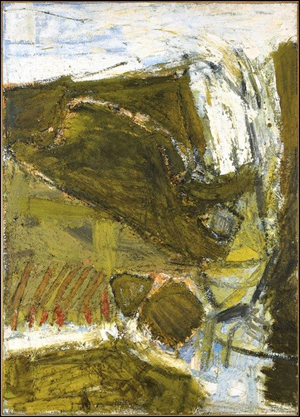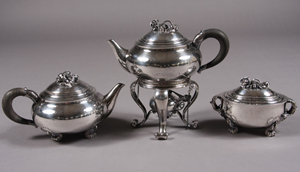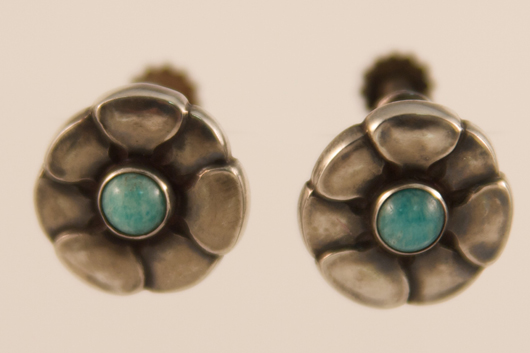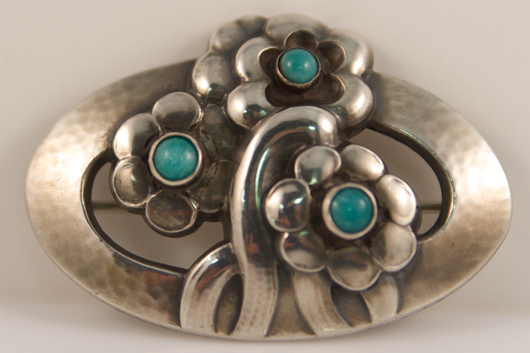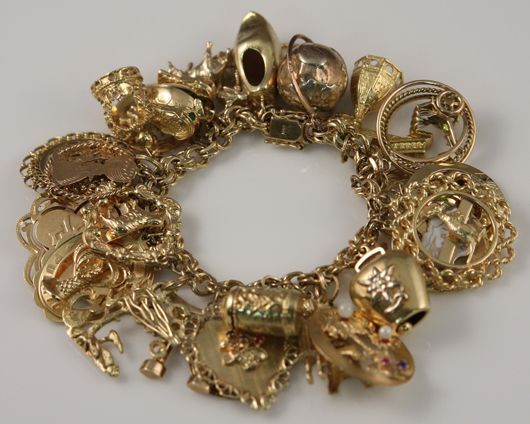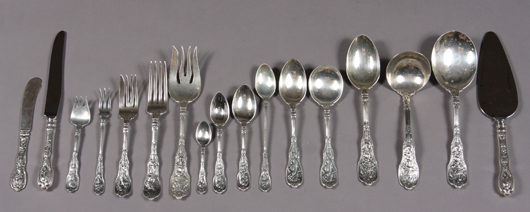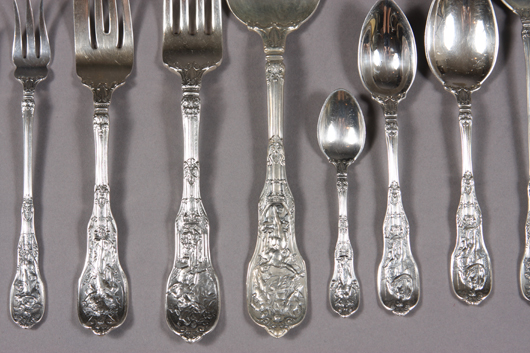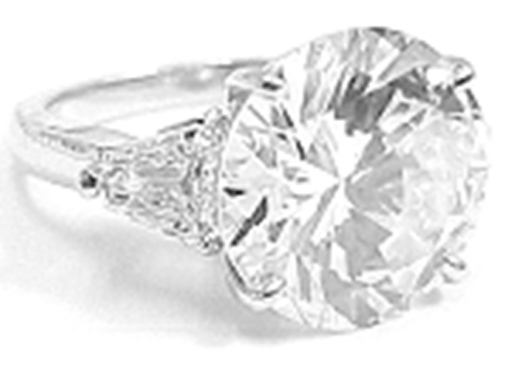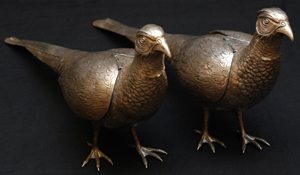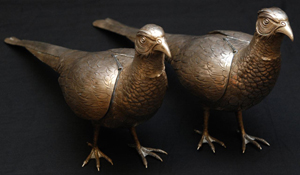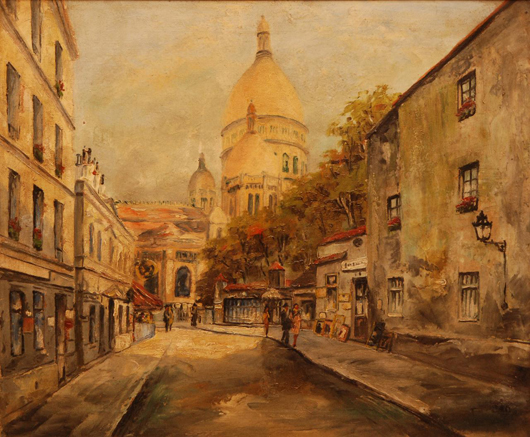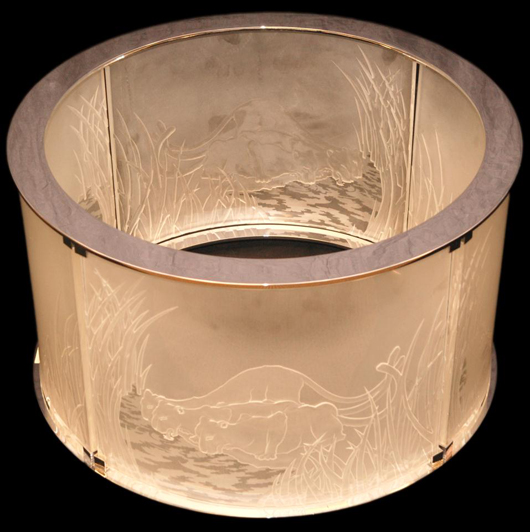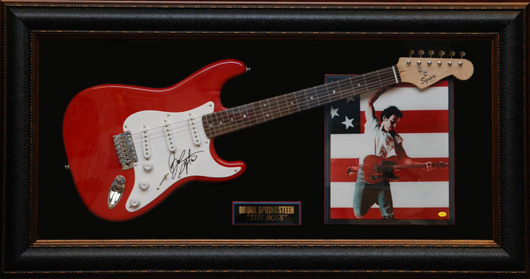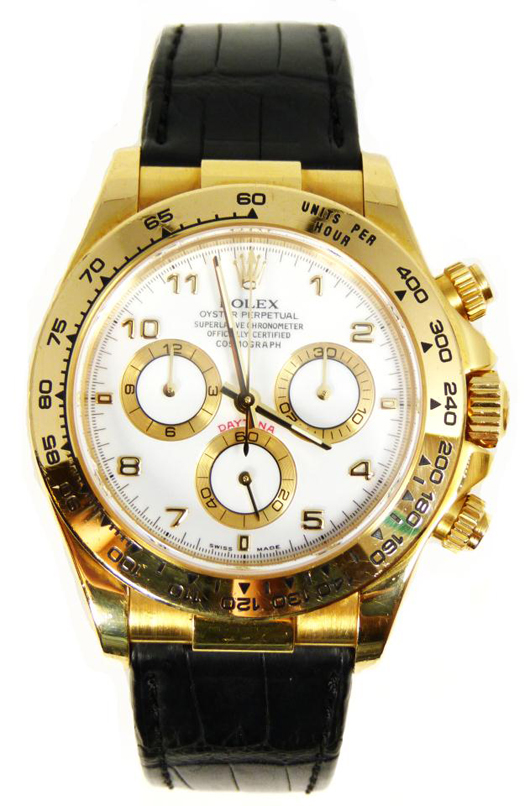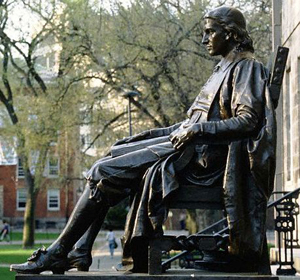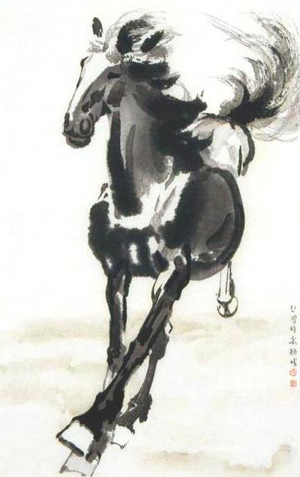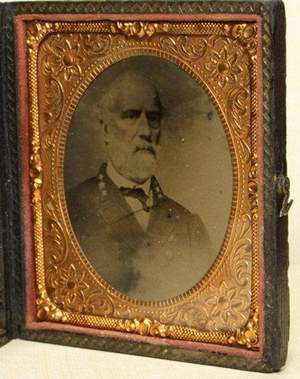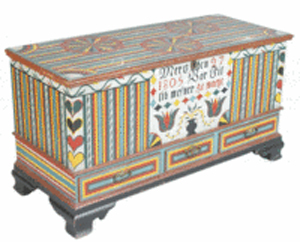Strolling around the 20/21 British Art Fair at the Royal College of Art this week, the world seemed an infinitely more optimistic place than the newscasters would have us believe. First of all, it was a hive of activity. More importantly, people were actually buying and there were red dots aplenty as evidence of that. The fair’s organizer, Gay Hutson, told Auction Central News that even with three days of the fair still to run, the signs were positive — “Lots of people have done good business with prices right up to the £75,000 level.” She confirmed that London dealer Julian Hartnoll had sold oils by Kitchen Sink painter John Bratby, Agnews had sold two John Tunnard paintings, and Beaux Arts had found a buyer for an Elisabeth Frink bronze. Rowntree Clark of Bury Street had sold Conquer, an important St. Ives landscape by Joe Tilson (born 1928) for “around £75,000” (Fig. 1).
The organizers of the various London art and antiques fairs scheduled to take place over the coming weeks must be hoping that this positive trend will continue. The next important test of the market’s health will be the London and Provincial Antique Dealers’ Fair (The LAPADA Art & Antiques Fair), which opens in Berkeley Square Wednesday, Sept. 21 (until the 25th).
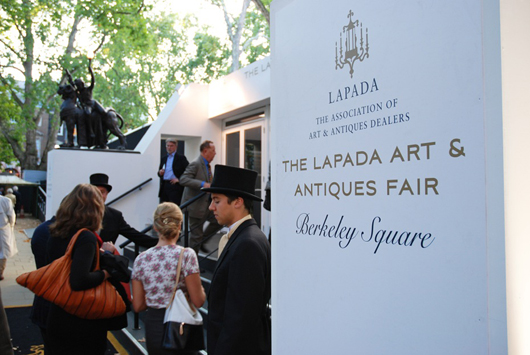
This is always an eclectic offering, embracing furniture, pictures, clocks, jewellery and unusual works of art. It’s a also a last opportunity to wear a summer frock and socialize, before the evenings begin to draw in.
Already one of the most talked-about objects to be seen at this year’s fair is a late 18th-century miniature ivory ship picture of a three-masted frigate under sail upon a blue-stained ivory sea, complete with men on board amid the rigging. This will be offered by London dealers Finch & Co., while Ted Few has a rare late 18th-century French pocket-sized “Loto Dauphin” in tortoiseshell, ivory, gold leaf and lacquer. This circular lotto-style game was invented during the reign of Louis XVI for his son, the dauphin. Ted Few’s example is in pristine condition and is provenanced to the estate of the Spencer family at Althorp — a Princess Diana connection that will surely only bolster its appeal.
The LAPADA marquee in Berkeley Square provides a superb location for a range of dealers to set up smart stands right in the middle of town,
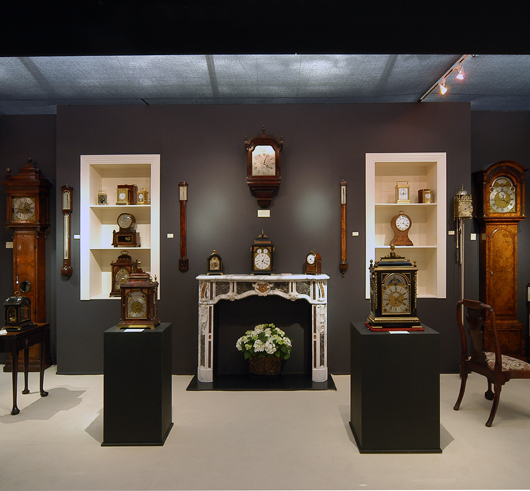
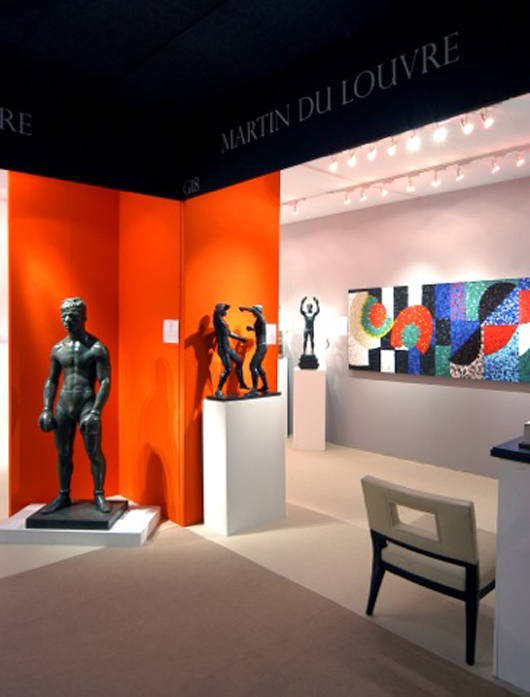
but what matters is whether people will come and buy.
No sooner will the LAPADA marquee have been packed away when the Decorative Antiques and Textiles Fair will open its doors in Battersea Park on Tuesday, Sept. 27.
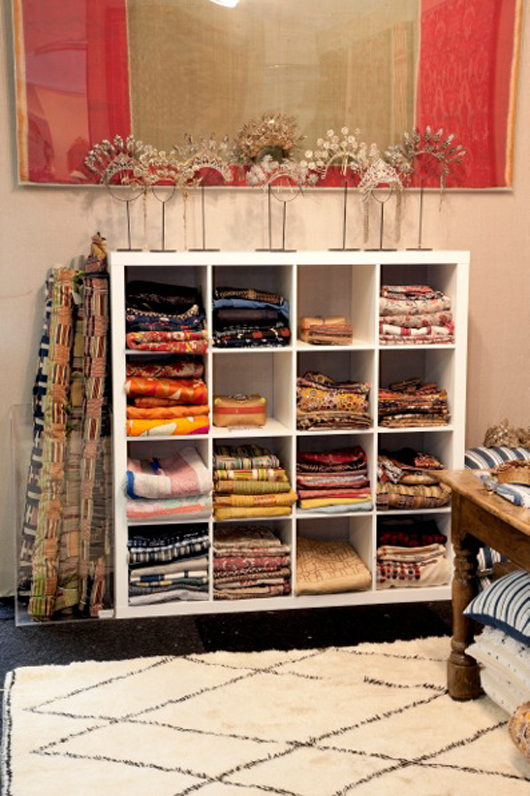
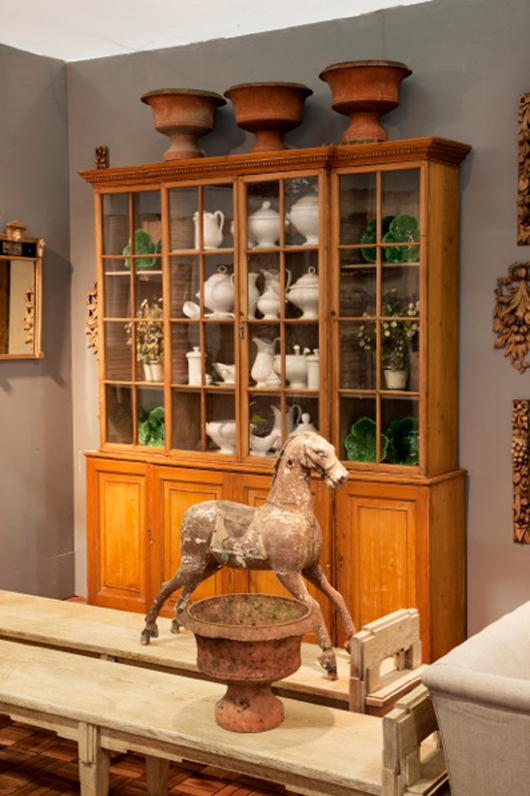
Now in its 26th year, the Battersea event, which runs for a week until Oct. 2, is decidedly inclusive and un-elitiest in its approach, attracting a broad clientele beyond the typical antiques fair visitor profile. Much of its popularity stems from the fact that it offers a wealth of ideas for domestic interior design, an abiding preoccupation of the great British public for whom interior decoration has become something of a minor religion. It will be interesting to see whether it too is weathering the storms of recession.
It is not only the traditional art and antiques dealers who like to pitch their tents in the capital in September and October. Next week also sees the opening of “Tribal Perspectives,” a multicultural event centred on rare art and artefacts from what the organizers describe as “rapidly diminishing cultures.” Cynics might assume, given the dire economic prognostications, that they are referring to the major European democracies, many of which seem to be in danger of total collapse. However, it is objects from the so-called “tribal” cultures of Africa, North America and Oceania that provide the focus here. Many well-known dealers in ethnographic material will be showing at the event, which takes place at the neighboring galleries of 27-28 Cork St., London W1 from Sept. 29 to Oct. 1.
Highlights include a Cameroonian chief’s glass bead hat from the Bemileke tribe, dating from the mid-1900s,
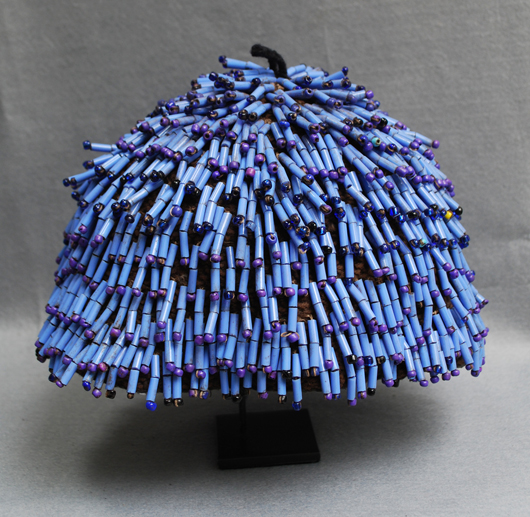
on sale with Owen Hargreaves at £690 ($1,090), and a mid-20th century two-legged wood and animal-skin ceremonial drum from the Makonde people of Mozambique, priced at £2,700 ($4,265) with Brian Reeves of Tribal Gathering.
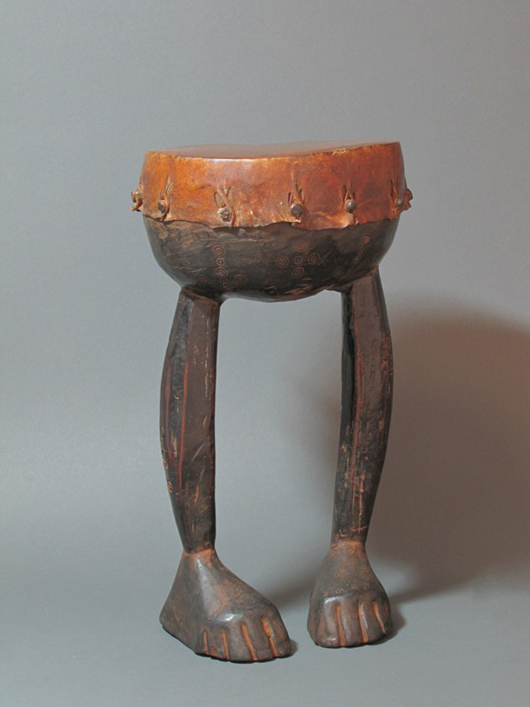
Reeves will also be offering a half-rabbit, half-human mask from the Kwere culture of coastal Tanzania, priced at £3,400 ($5,375).
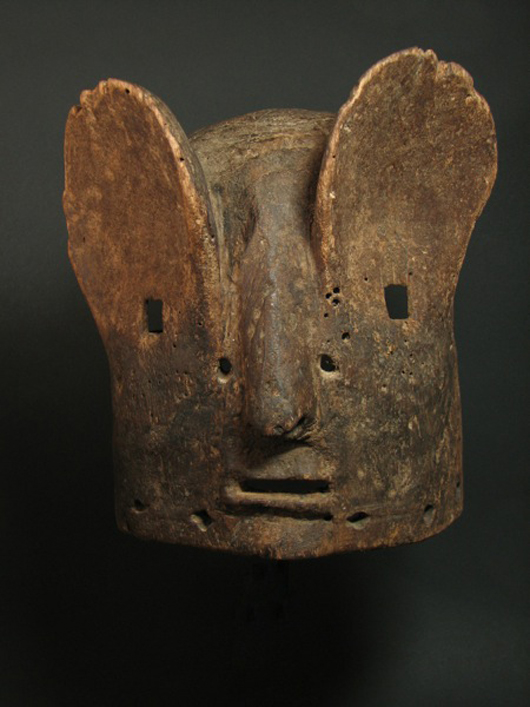
Anyone who has ever visited a major exhibition of works by the great Dutch painter Vermeer will know that they are best viewed not in the heaving scrum of a major blockbuster show but in the paintings’ home museums where they can usually be viewed on quieter, more intimate terms. Hopefully the Fitzwilliam Museum in Cambridge has made appropriate preparations for what are likely to be blockbuster visitor numbers when they open their exhibition “Vermeer’s Women: Secrets and Silence” on Oct. 5.
The show, curated by Dr. Marjorie Wieseman, head of Dutch paintings at the National Gallery in London, features 28 works by Vermeer and his contemporaries from the so-called Golden Age of Dutch painting. It is a safe bet that visitors will be jostling shoulder to shoulder with hundreds of other fellow admirers of this perennially popular genre of painting, particularly as the exhibition includes a good selection of iconic works by Vermeer including The Lacemaker,
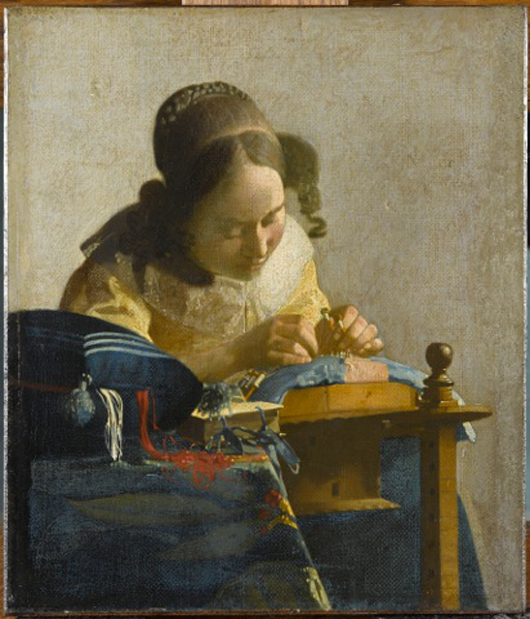
on loan from the Louvre in Paris; The Music Lesson (1662), on loan from the Royal Collection; A Young Woman Seated at a Virginal (1670), from London’s National Gallery,
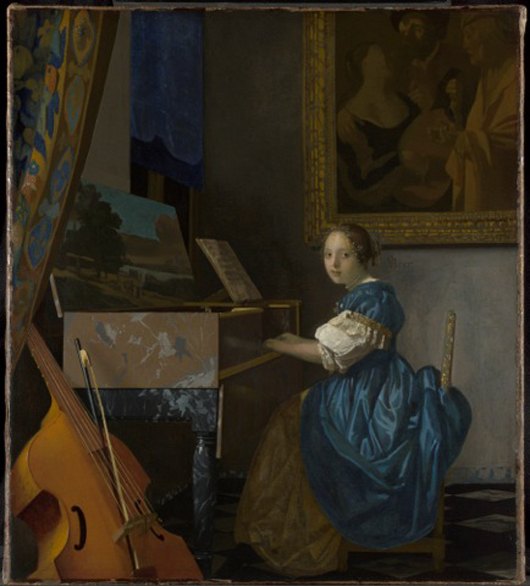
and Young Woman Seated at Virginal, from a private collection in New York.
One of the most notable trends in collecting in recent years has been the growing popularity of blending modern and contemporary works of art with more ancient objects. Thus where there was a time when one was expected to be either a collector of Old Master drawings or a collector of modern art (but not both), today the juxtaposition of periods is increasingly seen as fashionable and creative. ‘The Spanish Line’ — the forthcoming exhibition of Spanish drawings to be held at the Courtauld Institute of Art from Oct. 13 to Jan. 15 looks likely to suggest interesting art historical continuities and comparisons between, for example, on the one hand drawings by 17th-century Spanish masters such Jusepe de Ribera (1591-1652)
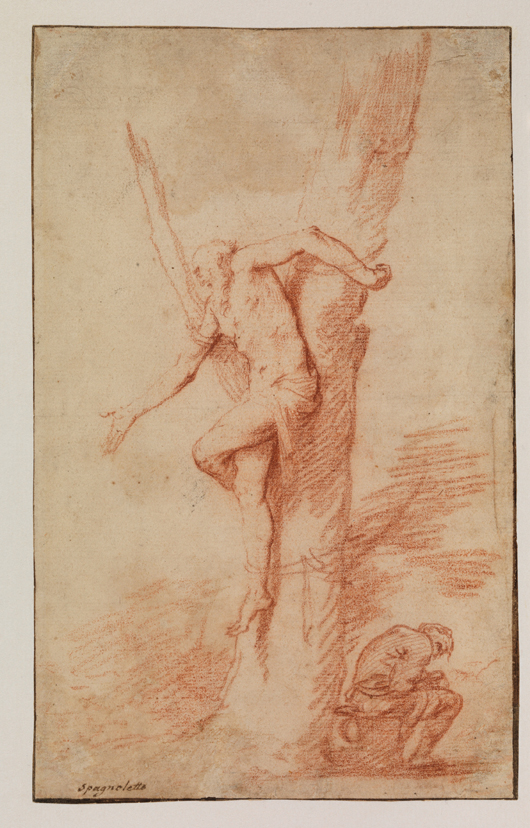
and Francisco Pacheco (1564-1644),
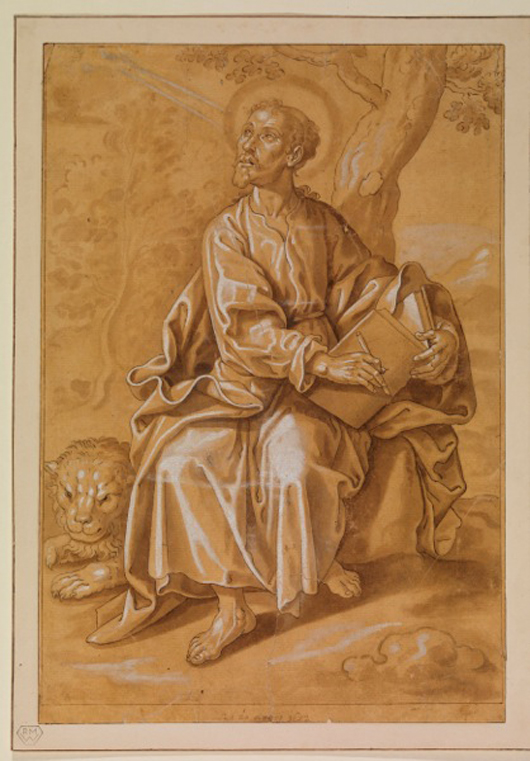
and on the other hand works by Francisco Goya (1746-1828) and Pablo Picasso (1881-1973). Picasso’s Pigs
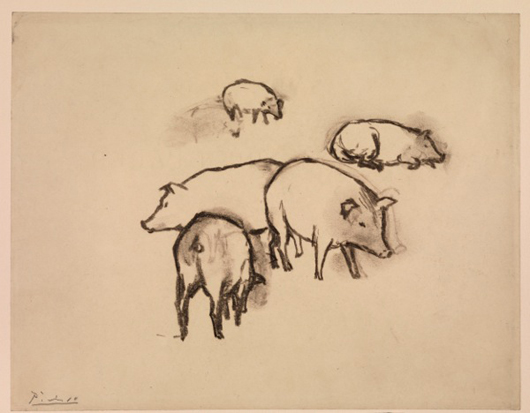
provides further evidence if any were needed that his extraordinary eye could make even the humblest subject seem startlingly new and fresh.
The Courtauld has enjoyed enormous success of late with its Toulouse Lautrec exhibition; this show seems likely to sustain that positive trend until the end of the year.
It may be all doom and gloom in the world of high finance, but the art world is still buzzing with vitality.


